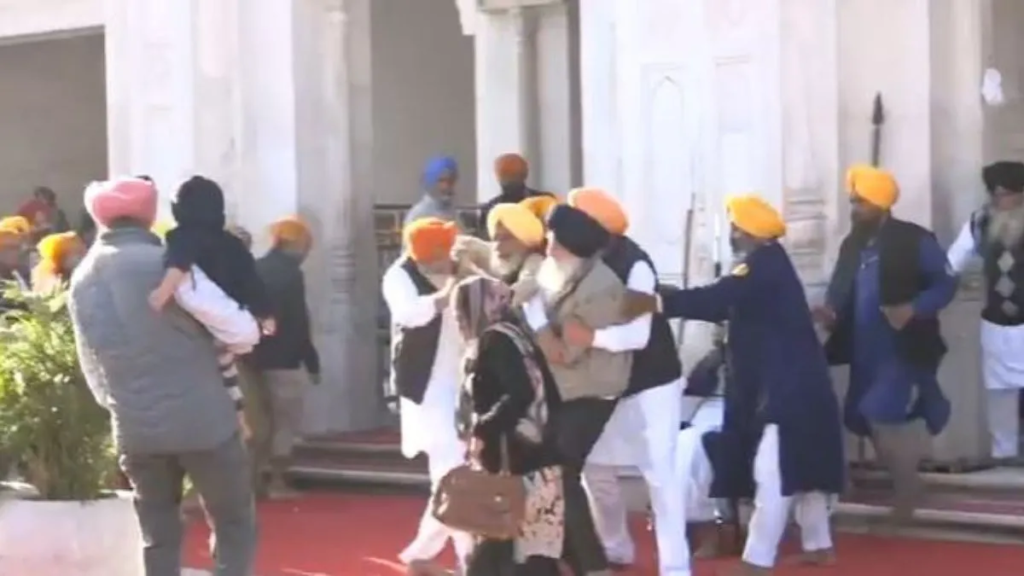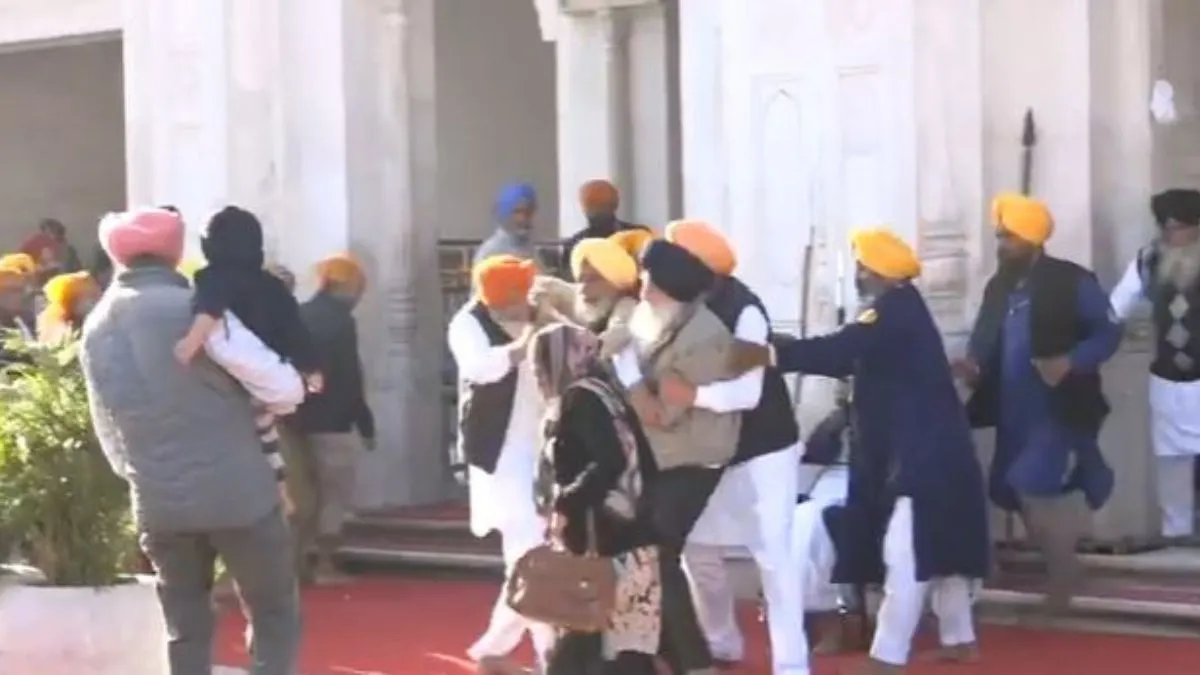The recent attack on Shiromani Akali Dal (SAD) chief Sukhbir Singh Badal at the Golden Temple has shocked the nation, raising concerns about security and the resurgence of militant elements.
The assailant, identified as Narain Singh Chaura, a former Khalistani militant, was swiftly overpowered by onlookers and security forces. This incident underscores the complex history of militancy in Punjab and the ongoing challenges in ensuring peace and stability.
The Incident at the Golden Temple
On a seemingly ordinary day at the Golden Temple in Amritsar, the atmosphere turned tense as Sukhbir Singh Badal, seated in a wheelchair due to a fractured leg, became the target of an assassination attempt.
Badal, performing ‘sewa’—a sacred duty in Sikhism—was engaged in penance for alleged mistakes made by the SAD government during its tenure from 2007 to 2017. As media personnel captured the moment, Narain Singh Chaura, dressed in a white kurta and pyjamas, approached Badal.
Read : Watch Frustrated Man Shouting at Khalistanis in Auckland, “Go Back and Do This in Your Own Country”
Footage shows Chaura calmly walking towards the SAD leader before pulling out a concealed firearm. The swift action of a plainclothes police officer nearby prevented a catastrophe. The officer grabbed Chaura’s hand, causing the bullet to miss its mark and hit a wall.
Former militant opened fire at SAD president #SukhbirBadal at the entrance of Golden Temple, where he was performing guarding duty as part of his tankha. Sukhbir narrowly escaped, and the man was arrested. pic.twitter.com/oARugiVrTt
— Parteek Singh Mahal (@parteekmahal) December 4, 2024
The quick response by SGPC task force members and local sewadars ensured Chaura was detained immediately. Although shaken, Badal remained unharmed, highlighting both the vigilance of his security detail and the precariousness of public figures’ safety in the region.
Who is Narain Singh Chaura?
Narain Singh Chaura is no stranger to law enforcement or the political landscape of Punjab. Known for his association with Khalistani separatist movements, Chaura has a history steeped in militancy.
He hails from Dera Baba Nanak, a region historically significant in the context of Sikh separatism. Over the years, he has faced numerous charges, leading a life that often saw him underground to evade authorities.
Chaura’s involvement in the infamous Burail jailbreak case remains a crucial part of his legacy. In 2004, he masterminded the escape of prominent Babbar Khalsa International terrorists, including Jagtar Singh Hawara, Paramjit Singh Bheora, Jagtar Singh Tara, and Devi Singh.

This high-profile jailbreak involved cutting the power supply to the jail, allowing the militants to tunnel their way out. The incident marked a significant moment in Punjab’s history, symbolizing both the audacity of militant operations and the challenges faced by law enforcement.
Despite periods of low activity, Chaura’s reemergence at the Golden Temple raises questions about the persistence of separatist ideologies and their potential to incite violence. His actions highlight the thin line between past militancy and present-day security threats, reminding the nation of the enduring legacy of the Khalistani movement.
Broader Implications for Punjab’s Security
The attack at the Golden Temple is not merely an isolated incident but a reflection of deeper undercurrents within Punjab’s socio-political fabric. The state has a complex history of militancy, particularly during the 1980s and 1990s when the Khalistan movement sought to establish an independent Sikh state.
Although the movement was largely suppressed, sporadic incidents and the continued presence of sympathizers indicate that the ideology still finds resonance among certain factions.
The resurgence of figures like Chaura suggests that the roots of militancy, though dormant, have not been entirely eradicated. Factors such as political dissatisfaction, socio-economic challenges, and perceived injustices contribute to the persistence of separatist sentiments. Moreover, the role of social media and global networks in perpetuating extremist ideologies cannot be overlooked.

For public figures like Sukhbir Singh Badal, the incident underscores the importance of robust security measures. As a Z-category protectee, Badal benefits from high-level security, yet the attack demonstrates that even the most stringent precautions can be vulnerable.
The role of local sewadars and the SGPC task force in preventing a tragedy highlights the collective responsibility of the community in maintaining peace.
The attack on Sukhbir Singh Badal by Narain Singh Chaura at the Golden Temple serves as a stark reminder of the challenges Punjab faces in its quest for stability and peace. It brings to the forefront the enduring legacy of militancy and the need for vigilance in addressing underlying socio-political issues.
As investigations continue, the incident also calls for a broader dialogue on ensuring security while fostering an environment of reconciliation and progress. Punjab’s history is a testament to resilience, and this incident reaffirms the need for continued efforts to safeguard its future.

